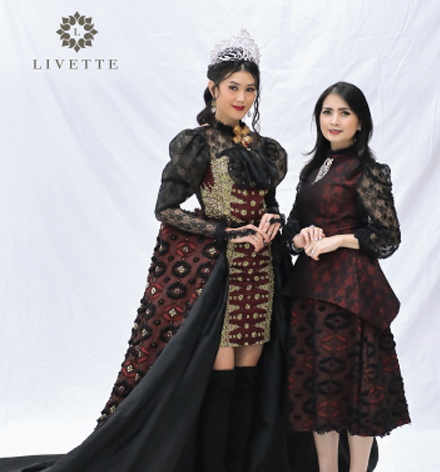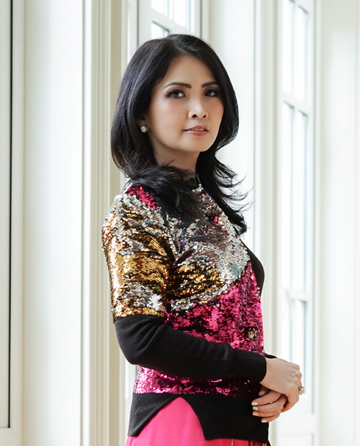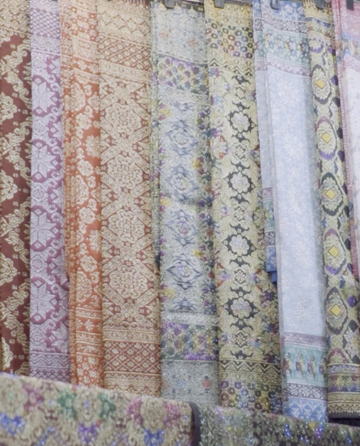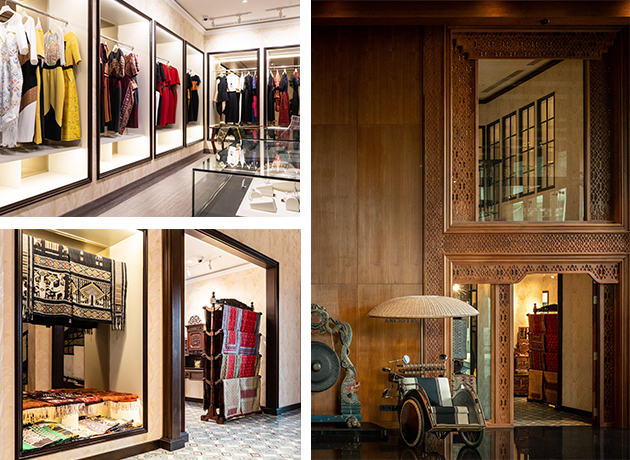
Founded in 2017 by the inventive Liliana Tanoesoedibjo, Livette is a local Indonesian brand that is positioned to instill pride in cultural heritage. Weaving together elegance, sophistication, and cultural authenticity, Livette presents a stunning collection of traditional woven fabric and beautiful dresses that transcends fashion, embodying the essence of luxury rooted in tradition. Livette showcases its unique identity by combining geometric traditional fabric patterns with modern classic designs to achieve a chic impression for its wearers.
This trove of heritage-inspired masterpieces in modern designs is established by Mrs Liliana Tanoesoedibjo as a way to preserve the nation’s incredible traditional textiles. As Designer of Livette, Liliana extended her appreciation for the beautiful cultural fabrics of Indonesian archipelago by preserving and transforming them into finished products. The highly exclusive dresses were charming pieces that honor the artistic culture of regions across the archipelago, taking inspiration from places like Java, Bali, Lombok, Sumatera, and East Nusa Tenggara.

About the Founder

Liliana Tanoesoedibjo, a renowned businesswoman noted for her timeless beauty and innovative spirit. She is the creative powerhouse behind the brand Livette Tenun who gracefully handles multiple responsibilities. Liliana has an extensive background in fashion and beauty, having graduated from Richard Robinson Fashion Design Academy and Ottawa’s Versailles Academy of Make-Up Arts in Canada. She is also currently serving as the Chairwoman and Founder of Miss Indonesia Organization, with experiences of being Jury member of Miss World in 2015 and 2016. As the Founder of Miss Indonesia, Liliana, through her programs, provides much appreciation to accomplished women. She believes that a woman’s beauty shines even brighter when she achieves success.
As the founding member of several culture organizations, Liliana personally believes that Indonesia’s cultural heritage must be preserved through familiarizing our future generations and our archipelago’s diverse clothing so that when worn, it can become a symbol of pride even for the younger generations for years to come. Through her fashion line Livette Tenun, Liliana hopes to bring value to the fashion industry, combining style and function with a timeless investment in exquisite fabrics.


Songket Palembang is described as a traditional cloth with the most intricate motifs compared to other fabrics. The golden color, which has its own history, and also the songket that is made from original silk threads and dayan (weaving tools), with various functions that make this songket very special.
Meanwhile, Tenun Sumba is one of the most detailed human works as the process of making it takes quite a long time. As an illustration, one sheet of Sumba-woven cloth requires at least six months to make, and there are even fabrics that take three years to make. The process includes winding to dipping in hazelnut oil, and the natural coloring that has to be done perfectly.

Each of the pieces has gone through intricate courses of development, weaving different colors of threads into layers of stunning fabrics. The materials for the threads include cotton, silk and any other kinds, while the process of making the fabric is an art itself.
The colors and the patterns consist knowledge, cultures, beliefs, and social values of a particular region in Indonesia.
The devices and techniques used in weaving threads are not the only things which make them an art. The patterns and colors of the fabrics are also crucial parts of the result. In fact, they help people to recognize which part of Indonesia the fabric is from. As mentioned before, they also reflect the beliefs and the cultures of a society.
Each of the pieces has gone through intricate courses of development, weaving different colors of threads into layers of stunning fabrics. The materials for the threads include cotton, silk and any other kinds, while the process of making the fabric is an art itself.
The colors and the patterns consist knowledge, cultures, beliefs, and social values of a particular region in Indonesia.
The devices and techniques used in weaving threads are not the only things which make them an art. The patterns and colors of the fabrics are also crucial parts of the result. In fact, they help people to recognize which part of Indonesia the fabric is from. As mentioned before, they also reflect the beliefs and the cultures of a society.

Park Hyatt Jakarta, Level 1
Jalan Kebon Sirih Kav. 17-19,
Jakarta 10340, Indonesia